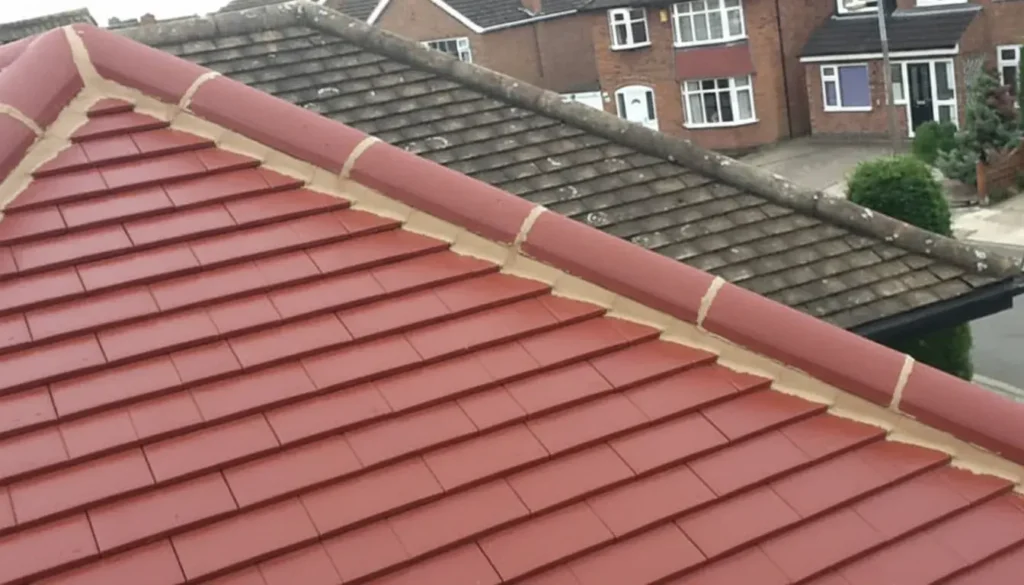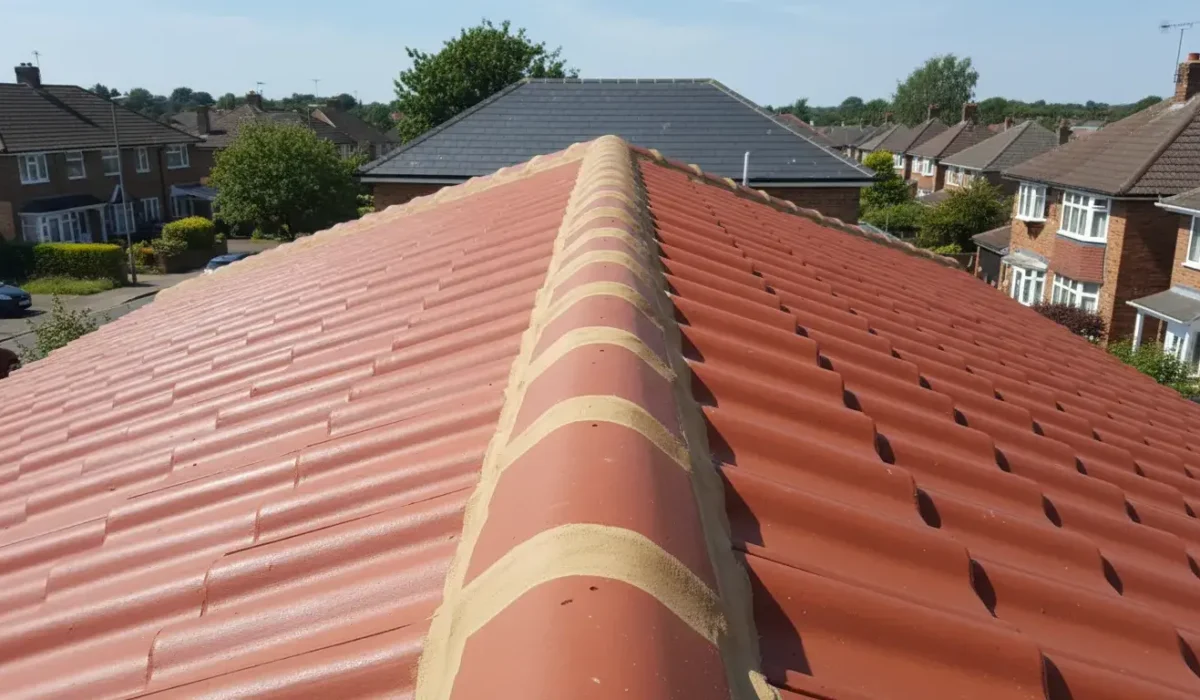Understanding Ridge Tile Re-bedding: Why It’s More Than Just Cement
On many older roofs, particularly those with a sloping ridge, the ridge tiles are secured with a mortar bed. Over time, this mortar deteriorates, cracks, and crumbles, leaving the ridge tiles vulnerable. This is a very common issue on UK homes, especially in Manchester’s damp climate, and it’s why ridge tile re-bedding is a critical part of roof maintenance.
It’s often misunderstood, however, with some people thinking a quick patch-up of cement will solve the problem. In reality, a proper re-bedding job is a skilled process that ensures your roof remains watertight for decades to come.
What is Ridge Tile Re-bedding?
Ridge tile re-bedding is the process of removing old, crumbling mortar and laying a fresh, new mortar bed to secure the ridge tiles at the apex of the roof. This ensures the tiles are firmly in place, preventing them from slipping, being dislodged by high winds, or allowing water to penetrate the roof structure.
The process involves:
-
Careful Removal: The existing ridge tiles are carefully removed, and all the old, loose, or damaged mortar is chipped away. This is a crucial step; leaving old, weak mortar in place will compromise the new bed.
-
Cleaning: The ridge tiles and the roof’s ridge are thoroughly cleaned of all debris and dust to ensure the new mortar adheres properly.
-
Laying the New Mortar Bed: A new, fresh mortar mix is applied to the ridge. A skilled roofer knows exactly how much to use and how to shape it to ensure a perfect, secure fit for each tile.
-
Re-laying and Pointing: The ridge tiles are then re-laid onto the new mortar bed and carefully aligned. The mortar is then “pointed”—smoothed and shaped—to create a clean finish and a watertight seal.
Re-bedding vs. Re-pointing: What’s the Difference?
This is a common point of confusion for homeowners.
-
Re-pointing: This is a cosmetic, temporary fix. It involves simply patching up the visible cracks in the existing mortar with a new layer. It does not address the underlying issue of a deteriorated mortar bed and is highly likely to fail within a short period.
-
Re-bedding: This is a full, long-lasting solution. It involves removing the old mortar entirely and creating a brand new bed for the tiles. This ensures a durable, watertight bond that will protect your roof for many years.
While re-pointing may seem cheaper and easier, it is a false economy. It is essentially a patch job that will need to be repeated, often resulting in more significant and expensive repairs down the line.



